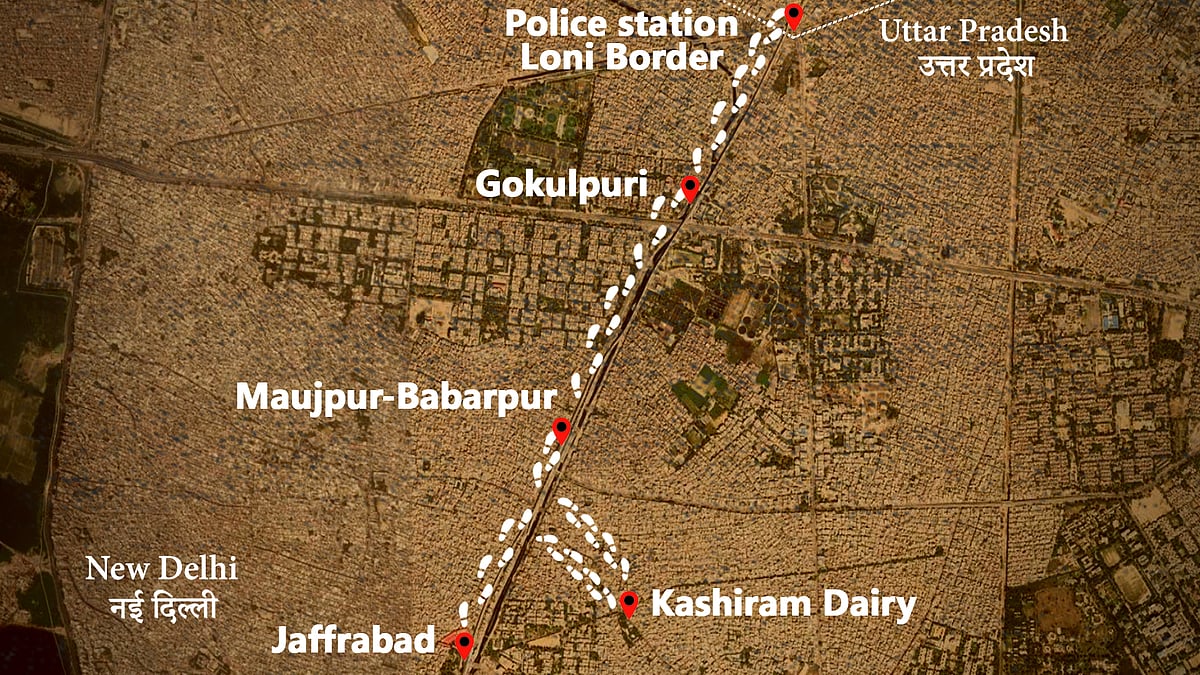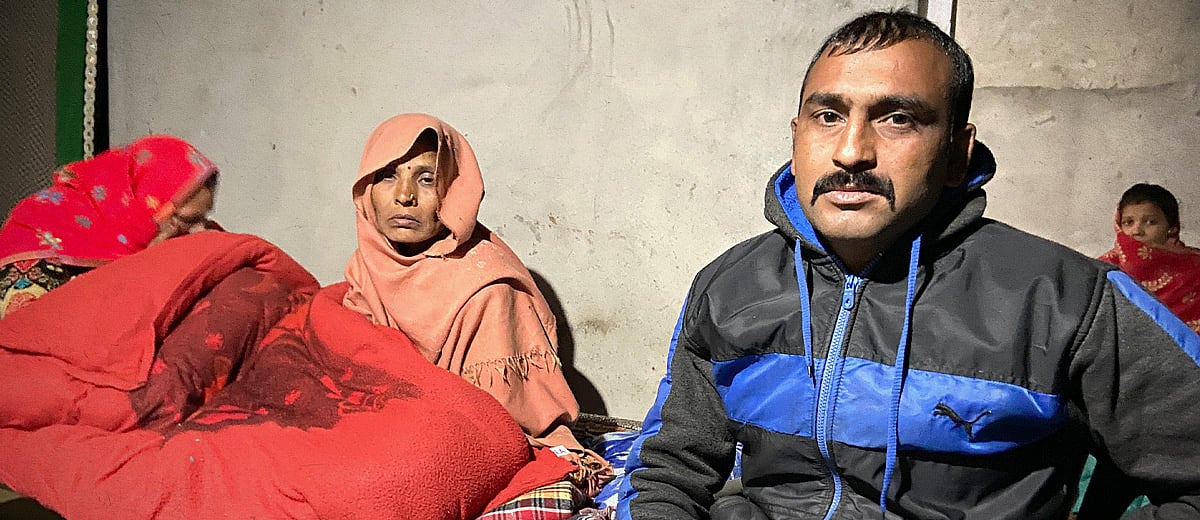A tale of two hospitals overwhelmed by Delhi’s communal carnage
At GTB Hospital, relatives struggled to collect bodies of their loved ones. At Al Hind Hospital, patients were attended to on floor mats.
As communal violence wracked North East Delhi over the last three days, two hospitals in the city were flooded with injured people, and dead bodies.
At least 23 people have been killed and several hundred injured in the violence so far. The injured include at least half a dozen mediapersons, one of whom was shot.
The Guru Teg Bahadur Hospital in Dilshad Garden, East Delhi, has received 21 dead bodies so far, including that of policeman Ratan Sharma, and treated at least 189 of the injured, according to Chief Medical Officer Sharad Verma.
On Wednesday, as doctors conducted autopsies in the GTB Hosiptal’s mortuary, the relatives of the dead waited outside, patiently. Frequently, as journalists would approach them to ask about what they had suffered, one or the other relative would break down.

Hari Singh Solanki was waiting to collect the body of his son Rahul, who had been killed on Monday. But neither the hospital authorities nor the police would explain to him why the body was not being released.
Rahul’s uncle Amir Singh Chauhan was also there. He said Rahul, 26, who was a civil engineer, had stepped out of his home at Karawal Nagar at around 4 pm. “Around a thousand Muslims came from Braj at the same time and one among them shot at Rahul,” he claimed. “Our kid was not part of any protest. He just happened to be outside to buy milk.”
Here, outside the mortuary, few people talked about Hindu-Muslim animosity or the citizenship law. Most of the people only cared about receiving their relatives’ bodies, which the authorities are reluctant to release. “All we are asking for is our son’s body,” said Amir. “We have been sitting here since Monday evening. Arvind Kejriwal came here but didn’t care to visit us or give us any consolation.”
The family members had been told a special team of doctors would be formed to conduct autopsies, so they would have to wait to collect the bodies. As time passed, however, the relatives grew agitated.
At around 2 pm, there was commotion. Mohammad Rashid and Irfan Elvi were shouting that a police officer named Charan Singh was asking for a bribe of Rs 4,000 to release their cousin Shahid’s body.
“In the morning on Monday, my brother left home for work. He was a rickshaw puller. At around 7 pm, we were told that his body had been brought to this hospital. The police didn’t do their job and, as a result, my brother was killed. Now they are asking for money to videograph and release his body. Where will I get the money from? We don’t have any money,” Rashid said.
When Newslaundry asked police officials standing outside the mortuary about these allegations, they denied them. Newslaundry tweeted a video of Rashid levelling these allegations, eliciting a response from Shaleen Mitra, private secretary to Delhi’s health minister, Satyendar Jain. He later told Newslaundry that he had spoken with Rashid on the phone and ensured he got his brother’s body.
Furkan Ansari, 32, who ran a handicrafts business, was out shopping in Chand Bagh when a mob stormed the market and somebody shot him. He bled to death, his brother Wasim Ansari claimed. “He was not at all politically active,” Wasim continued. “He died because there were no hospitals nearby. He bled for two hours before he was brought here.”
Wasim hadn’t told their mother or Furkan’s wife about his death. They thought he was in a critical condition but alive.

Family members of Shahid and Rahul also blamed the lack of urgent medical attention for their deaths. “We need strict action against the hospitals that denied our son medical attention on time,” said Amir, adding that a local clinic had refused to treat Rahul saying they didn’t have adequate facilities.
All those Newslaundry spoke with at the GTB Hospital insisted that their dead relatives were not involved in the violence; they were either doing their work or had just stepped out to the market.
In ward 14, Newslaundry met Akash Napa, a journalist with JK 24X7, who had been shot from within a mob while reporting from Yamuna Vihar on Monday. The bullet is still lodged near his heart and he must undergo a series of tests before the doctors consider operating on him.
“I reached Bhajanpura when the petrol pump was already engulfed in flames,” Akash told Newslaundry from his hospital bed. “I was doing a live telecast when a bunch of pro-CAA protesters approached me. I asked them about the situation and they said they would show me. I went with them to Yamuna Vihar. I videographed the situation and headed towards anti-CAA protesters. There was sudden commotion and firing from among the anti-CAA protesters. After that, I do not remember anything.”

Akash broke down recalling that there were no police around to help him. He was brought to the hospital by a colleague who informed his family the same night.
“Journalists are no different from citizens. When we go to cover issues with our pen, we want to be a part of them. If our institutions ensure safety for all citizens, journalists are safe,” Akash’s father Ram Prakash Napa, a former journalist, said. “Our institutions have failed to provide safety.”
Al Hind Hospital
Al Hind Hospital in Mustafabad can accommodate 15 patients at a time. Since Sunday night, however, it has had to take in around 300 patients, all of them victims of the communal violence in North East Delhi, according to its director Dr MA Anwar. They had to spread mats and rugs on the first floor to keep up with the rush.
The hospital doesn’t have a surgeon or adequate facilities to perform major surgery. Yet, they were called upon to deal with bullet and acid injuries.
“Patients with bullet injuries are just given basic treatment to stop the blood flow,” Anwar said. Two people were brought dead to Al Hind, he added, and one died while being shifted to another facility.
Overwhelmed, the hospital was not able to keep detailed records of the injured, Anwar said. From their names, though, it seemed all of them were Muslim. Mustafabad is a Muslim-majority area.
After the violence started on Sunday evening, the police barricaded every road in Mustafabad, Anwar said. They prevented ambulances from getting in and out of the area, forcing Anwar to approach the Delhi High Court on Tuesday night. He pleaded that ambulances be allowed to shift patients from Al Hind to other medical facilities in the city. The court directed the police to facilitate the movement of ambulances and patients without delay.
“We asked the high court to let us bring in specialist doctors and adequate equipment, or order the police to allow ambulances to move in and out of the area,” Anwar said.
Though patients were shifted out after basic treatment throughout Tuesday, the hospital remained choked. At night, they had to down the shutters because they couldn’t take in more patients, said Dr Meraj, a dentist. They could hear people banging at the shutters through the night, he added.
By Wednesday afternoon, however, there were only a few patients left.
Abdul Mukim was one of them. He was lying on a mat on the floor, his daughter sitting beside him. He lives in Mustafabad and works as a tailor in neighbouring Shiv Nagar. He was at work on Tuesday when, at around 6.30 pm, he heard a commotion. He went out to find people pelting stones. One stone hit him on his head.
“He came home with his head in a bandage but still bleeding,” his daughter said. “He was feeling nauseous and the bleeding wouldn’t stop. In the morning, we brought him to this hospital. He is better now.”

Mohammad Imran, who drives an electric rickshaw, was returning home to Mustafabad after dropping a fare in Shiv Vihar on Monday when a man he identified as one Anil threw a glass bottle at him and then a brick. He was injured in his face and leg.
Mustakeen Saifi said he was in Shiv Vihar for work on Wednesday morning when a crowd of people started pelting stones and firing weapons he couldn’t identify. One stone hit him near his left eye.
Saifi runs a cosmetics shop in Mustafabad and lives with his parents. He claimed the rioters were also throwing acid and petrol bombs at Muslim homes and shops.
Arfan, 14, was injured in his right hand. He was passing through Shiv Nagar on Tuesday, Afran claimed, when somebody threw a stone at him. Arfan’s class 9 exam is on Thursday. “I don’t know whether they’ll take the exam or not. I’ll have to call and find out,” he said.

Arfan’s father, who was with him at the hospital, moved his family to Delhi from Aligarh around 18 years ago. “In all this time, I have never seen anything like this in Delhi.”
 Smoke and fury: An eyewitness account of Mob Raj in North East Delhi last night
Smoke and fury: An eyewitness account of Mob Raj in North East Delhi last night
 In Bijnor, UP police add bogus communal angle to citizenship law protests
In Bijnor, UP police add bogus communal angle to citizenship law protests